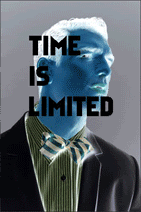 The 1185 naval Battle of Dan-no-ura did not end well for the Heike of Japan. One of their generals had defected to the side of the rival Minamoto clan, and arrows were raining down on their ships. Soon, the Heike's child-emperor Antoku (only six years old at the time) was left defenseless as his guardian samurai hurled themselves into the sea, preferring death to defeat. Little Antoku was slain with his grandmother, and the Minamoto ultimately won the Genpei War and became the ruling shogunate of all of Japan, beginning a period of military rule that lasted several hundred years.
The 1185 naval Battle of Dan-no-ura did not end well for the Heike of Japan. One of their generals had defected to the side of the rival Minamoto clan, and arrows were raining down on their ships. Soon, the Heike's child-emperor Antoku (only six years old at the time) was left defenseless as his guardian samurai hurled themselves into the sea, preferring death to defeat. Little Antoku was slain with his grandmother, and the Minamoto ultimately won the Genpei War and became the ruling shogunate of all of Japan, beginning a period of military rule that lasted several hundred years. This historical battle produced some mighty interesting folklore. As the legends goes, for allowing their clan to be destroyed, the spirits of the Heike samurai were doomed to wander the ocean floor in the form of crabs. Even in their new crustacean forms, they still bore the furrowed brow and snarl that typifies any good samurai. Upon finding these many-legged warrior ghosts in their nets, fishermen would throw them back into the sea lest they interfered with the world of the supernatural.
Nowadays, the Heikegani are a fairly common variety of crab in the waters of Japan. They are immediately recognizable thanks to their distinctive bumpy carapace. Human beings are psychologically hardwired to recognize facial patterns (just try looking at an electrical outlet and avoid seeing a panicked expression) and it's easy to see a grimace on the backs of these crabs. It is thought that the Heikegani were given their unusual shells thanks to generations of artificial selection. The superstitious fishermen of antiquity, tossing back those crabs that appeared to have samurai faces while eating the crabs that appeared normal, unknowing bred a new species. Thanks to the enduring legend surrounding the Battle of Dan-no-ura, the Heikegani have had a lasting cultural influence; they have served as the inspiration for an acclaimed 1911 shin kabuki play and even appeared in a 1997 issue of the long-running Usagi Yojimbo comic series as enemies of the eponymous samurai rabbit.
Would you like to know more?
-Watch Carl Sagan talk about Heikegani in this educational video
-Read this article by Joel W. Martin








So, did those Samurai die in the name of honor as Nicholas Cage, given the chance.
ReplyDeletecrab ANGRY!
ReplyDelete-James
Also!
ReplyDeleteAlternate title for this article:
Seamurai!
-James